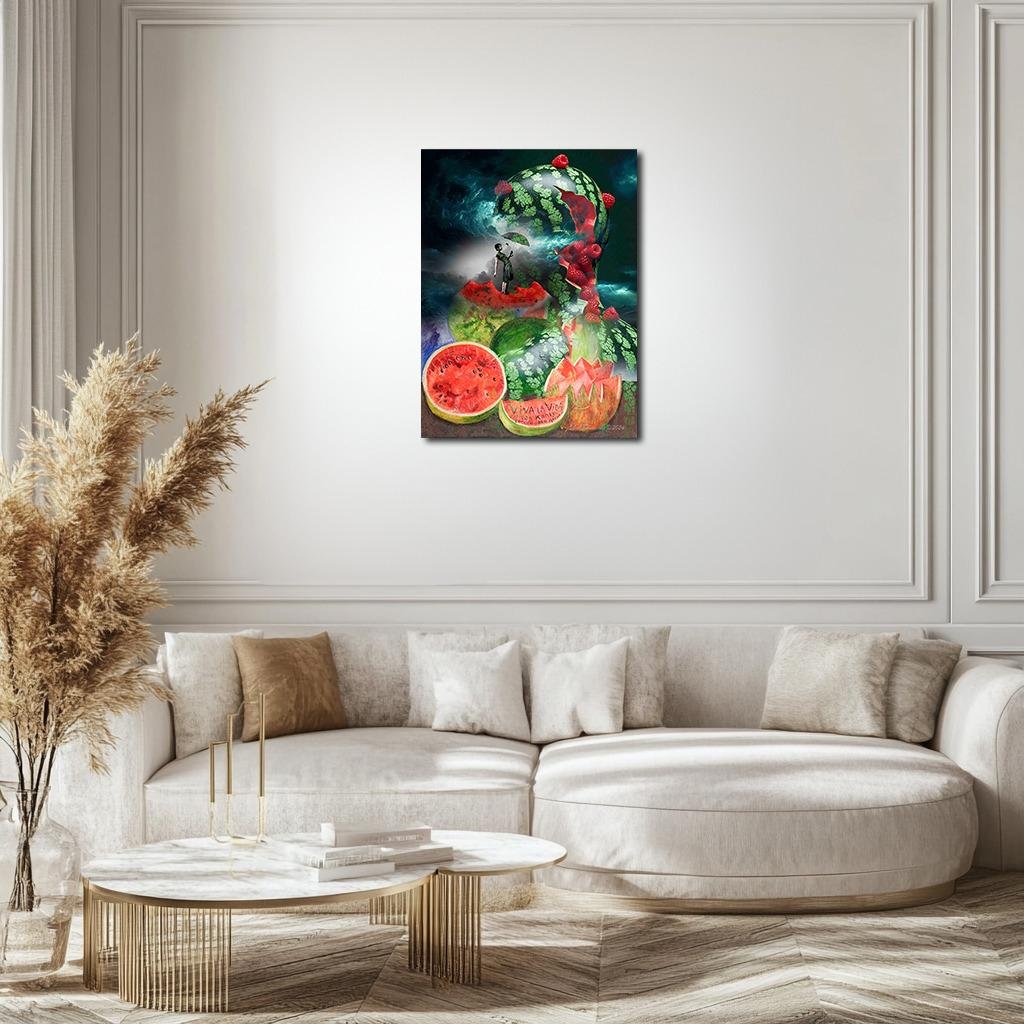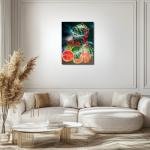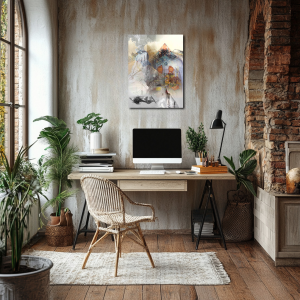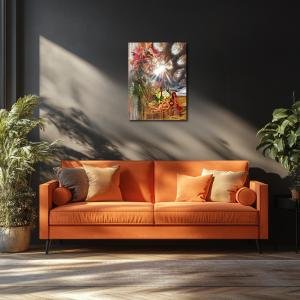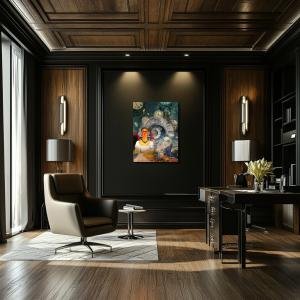Viva la Vida: Frida’s Last Pulse of Color
Viva la Vida: Frida’s Last Pulse of Color reimagines Kahlo’s final still life as a luminous storm of fruit, memory, and cosmic farewell. Through blood reds, jungle greens, silver storms, and spectral shadows, watermelons become bursting bodies and the phrase “Viva la Vida” becomes a final cry of joy. In this surreal farewell, Kahlo’s spirit ascends not through escape, but through color—sweet, wounded, eternal.
Please see Below for Details…
Hotline Order:
Mon - Fri: 07AM - 06PM
404-872-4663
This conceptual reimagining of Frida Kahlo’s Still Life: Viva la Vida transforms her final offering into a surreal meditation on mortality, memory, and the luminous insistence of joy in the face of final darkness. Titled Viva la Vida: Frida’s Last Pulse of Color , the piece blossoms outward from the core image of ripe watermelons, splitting, spilling, and swelling into a spectral cosmos where fruit becomes flesh, storm becomes silence, and the artist’s voice, though quiet, reverberates endlessly in color.
At the base of the composition, the original watermelons remain—sliced, glistening, some cut into triangles, others halved to reveal their vivid red interiors studded with seeds. One bears the iconic inscription: “Viva la Vida, Frida Kahlo, Coyoacán, 1954”—a message not carved into fruit, but etched into time. This line becomes the heartbeat of the entire work. The fruit does not merely rest in stillness; it radiates with primal defiance. Above it, the composition fractures into dream logic. The watermelons rise, cascade, and congeal into the silhouette of a towering human figure—an elemental body made not of skin, but of rind and pulp, life and disintegration.
This figure looms forward, bursting with both beauty and decay. The rind appears glossy, almost alien in texture, with veins of viridian, moss, and deep forest green. But the ruptures show what lies beneath: red-pink flesh hemorrhaging juice and seeds, echoing the body’s raw interior. In these openings, scattered raspberries bloom like tumors or offerings—symbols of sweetness and the fragility of life’s final pleasures.
Emerging from the heart of the fruit-form, a solitary female figure holds an umbrella. She floats on a slice of melon like a raft in a cosmic sea. Clad in black and silhouetted by white light, she appears both lost and lifted, as though the sweetness she stands upon is melting beneath her feet. Is she Frida herself? A memory? A witness? Her ambiguous form allows her to stand in for everyone who has ever clung to joy while surrounded by storm.
Behind her and across the upper half of the work, thunderclouds churn in oceanic grays, haunting violets, and green-tinted dusk. The sky is not tranquil; it is fierce, pushing forward with the full weight of mortality. Lightning forks through the melon-shaped skull, not to destroy but to animate. It is a sky of final reckoning, but also of revelation. The world is falling apart—and yet it gleams.
The color palette of Viva la Vida: Frida’s Last Pulse of Color is one of deep saturation and visceral emotional symbolism. The watermelons dominate with an orchestra of reds—from juicy scarlet to fleshy magenta to bruised crimson. These reds are not simply lush—they are blood memory, pulsing with vitality even as they dissolve. The green rinds glisten in sea tones: viridian, mint, and deep pine, each carrying the weight of tropical abundance and earthy grounding. Together, they form the skin of joy, wrapping the fruit’s fleeting sweetness in illusionary permanence.
In contrast, the sky and storm surge in smoky aquamarines, cobalt shadows, and gunmetal silver. These cooler tones act as emotional counterweight, suggesting the inevitable encroachment of time, pain, and the beyond. Yet the shadows do not overcome the fruit—they frame it, emphasizing its glow.
The raspberries, painted in saturated carmine and velvety purple, erupt in unnatural places, like offerings placed on a grave or wounds blooming into beauty. Their placement disrupts the visual rhythm of the melons, suggesting that sweetness and suffering are not separate—they often arrive together, nested in one another.
The lone figure atop the melon is washed in monochrome—charcoal, cream, and fog-gray. Her starkness against the vibrant world around her turns her into a ghost, a prophet, or a traveler. She carries no expression, only the symbolic gesture of the umbrella—half-shield, half-witness to rain that may never fall.
When I created Viva la Vida: Frida’s Last Pulse of Color , I imagined Kahlo’s final painting not as a still life, but as a final breath—a whispered hymn to the stubborn ecstasy of being alive. Written just days before her death, the phrase “Viva la Vida” was not an act of irony. It was a rebellion against silence. In this reimagining, I sought to explode that quiet fruit into something cosmic—to show that even in decay, Frida offered not bitterness, but beauty.
The composition flows from the base of the sliced melons, up through the body of bursting fruit-flesh, into the clouds, then returns to the glowing inscription. The movement is cyclical—life blooming, rupturing, rising, remembering.
In this vision, Frida Kahlo is the fruit, the cloud, the inscription, the witness, the sweetness, and the storm. She does not vanish. She lingers in the seeds, in the pulp, in the color itself—forever whispering, Viva la Vida.
Add your review
Your email address will not be published. Required fields are marked *
Please login to write review!
Looks like there are no reviews yet.

